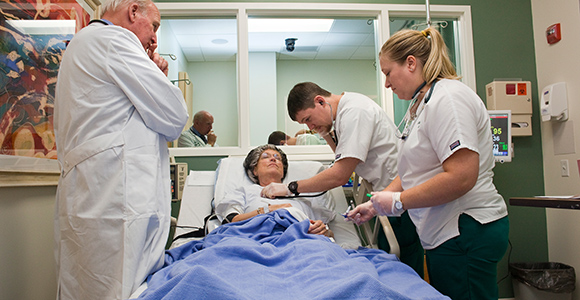
(Photo Credit: COD Newsroom/Flickr)
Employers continued to press state lawmakers to use this year’s state budget to make investments in successful workforce training programs, making the case today in a Senate budget committee hearing for $250 million in new funding for career technical education (CTE) programs offered by community colleges.
Several business groups joined the California Economic Summit in urging the Legislature not only to approve this funding, but to distribute the dollars across regional economies—instead of to individual colleges—so they can serve as a fiscal incentive for campuses to work together to produce graduates with the skills needed by local employers.
“The California Community College system is the largest producer and preferred supplier of many of our most in-demand professionals, such as nurses and other critical allied health professionals,” said Cathy Martin, vice president of workforce policy for the California Hospital Association, who was invited to testify before the Senate Budget Subcommittee No. 1 on Education, along with several representatives of the community college system. “At a time when we need middle-skills workers more and more, CTE programs’ share of community college enrollment is declining.”
The governor has outlined plans for remedying this in the 2016-17 budget, proposing a new $200-million Strong Workforce Program that will expand access to career technical education courses and an additional, ongoing $48 million commitment to an existing Career Technical Education Pathways Program that has increased collaboration between K-12 schools and community colleges. Both ideas were among the 25 recommendations to emerge from last year’s Strong Workforce Task Force, a statewide effort to bring leaders from the educational system and industry together to generate ideas for improving the workforce-training pipeline.
“[The California Hospitals Association] was honored to have been a member of the Task Force. Our members have long advocated for many of the recommendations contained in the final report,” said Martin. “The aim of these recommendations is to make California’s career technical education system more effective at meeting the needs of the labor market.”
There is little doubt about the success of career technical education programs, in particular, at accomplishing this goal—with graduates earning an average salary of $66,000 only five years after finishing their programs, compared to $38,500 for other community college graduates. However, while programs in nursing, automotive technology, or welding can offer a clear path into the middle class, they often come with higher costs as a result of smaller class sizes and specialized lab settings and equipment.
Increased funding will expand access to CTE to more community college students, but employers believe the way these funds are distributed—and the message this fiscal system sends to the colleges—is just as important.
“Regional coordination is the most effective way for employers to engage with multiple colleges and other relevant partners, while optimizing the efficient deployment of resources,” said Martin. “As industry stakeholders, we agree with a regional approach for funding.”
These new investments, she pointed out, aren’t the only place this approach should be applied. “It is important to remember that the $200 million proposed by the [governor] is a tiny fraction of the funding that community colleges spend on CTE,” Martin said, noting that the state spends more than $2 billion each year on these programs. “We want to ensure the responsiveness of the entire CTE system to labor market needs.”
To accomplish this, Martin joined the Summit in pushing lawmakers to seek improved data on the outcomes of all CTE investments, while streamlining course and curriculum approval times and eliminating barriers to hiring instructors to teach CTE courses.
Lawmakers will continue to hold hearings and make amendments to the budget until a final agreement is reached and the final budget is signed by the governor in June.

